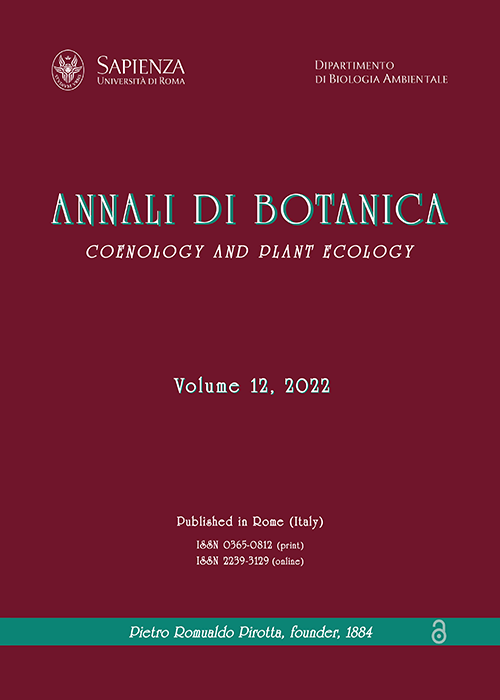ALIEN PLANT SPECIES GROWING NEAR TRAFFIC LINE STRUCTURES IN THE TŘEBOŇSKO PROTECTED LANDSCAPE AREA
DOI:
https://doi.org/10.13133/2239-3129/17328Keywords:
highway, invasive species, protected area, roads, railways, alien plants spreading.Abstract
The occurrence of non-native species is one of the priorities for nature and landscape protection. Protected areas are among the most valuable parts of the landscape, so nature conservation takes care not only of rare and endangered species, but also of alien species. The aim was to map out the occurrence of invasive and other non-native plant species on model examples of two types of propagation vectors - roads and railways in the Třeboňsko Protected Landscape Area. The total of 75 alien plant species were identified in 68 locations, of which 28 are listed in the Black, Gray and Watch Lists of alien species in the Czech Republic. The most abundant families were Asteraceae, Poaceae and Amaranthaceae. No difference in the occurrence of alien plants between the observed types of propagation vectors was found. The most dangerous invasive species growing along the main roads and railways were: Reynoutria japonica Houtt. var. japonica, Impatiens glandulifera Royle, Helianthus tuberosus L., Solidago sp., Conyza canadensis (L.) Cronq., and Echinochloa crus-galli (L.) P.B. Another non-native species that was captured successfully along rail tracks and road sides was Digitaria sanguinalis (L.) Scop. subsp. sanguinalis. Near roads, a significant spreading of the expansive halophilic species Puccinellia distans (Jacq.) Parl. was also found. The rare growings of Plantago coronopus L. near a road and Alopecurus myosuroides Huds. near a highway were also reported. The occurrence of many aliens and spreading species was discussed.
Downloads
Published
How to Cite
Issue
Section
License
Copyright (c) 2022 Annali di botanica

This work is licensed under a Creative Commons Attribution-NonCommercial-ShareAlike 4.0 International License.
The copyright for articles in this journal are retained by the author(s), with first publication rights granted to the journal, articles are free to use with proper attribution in educational and other non-commercial setting.

